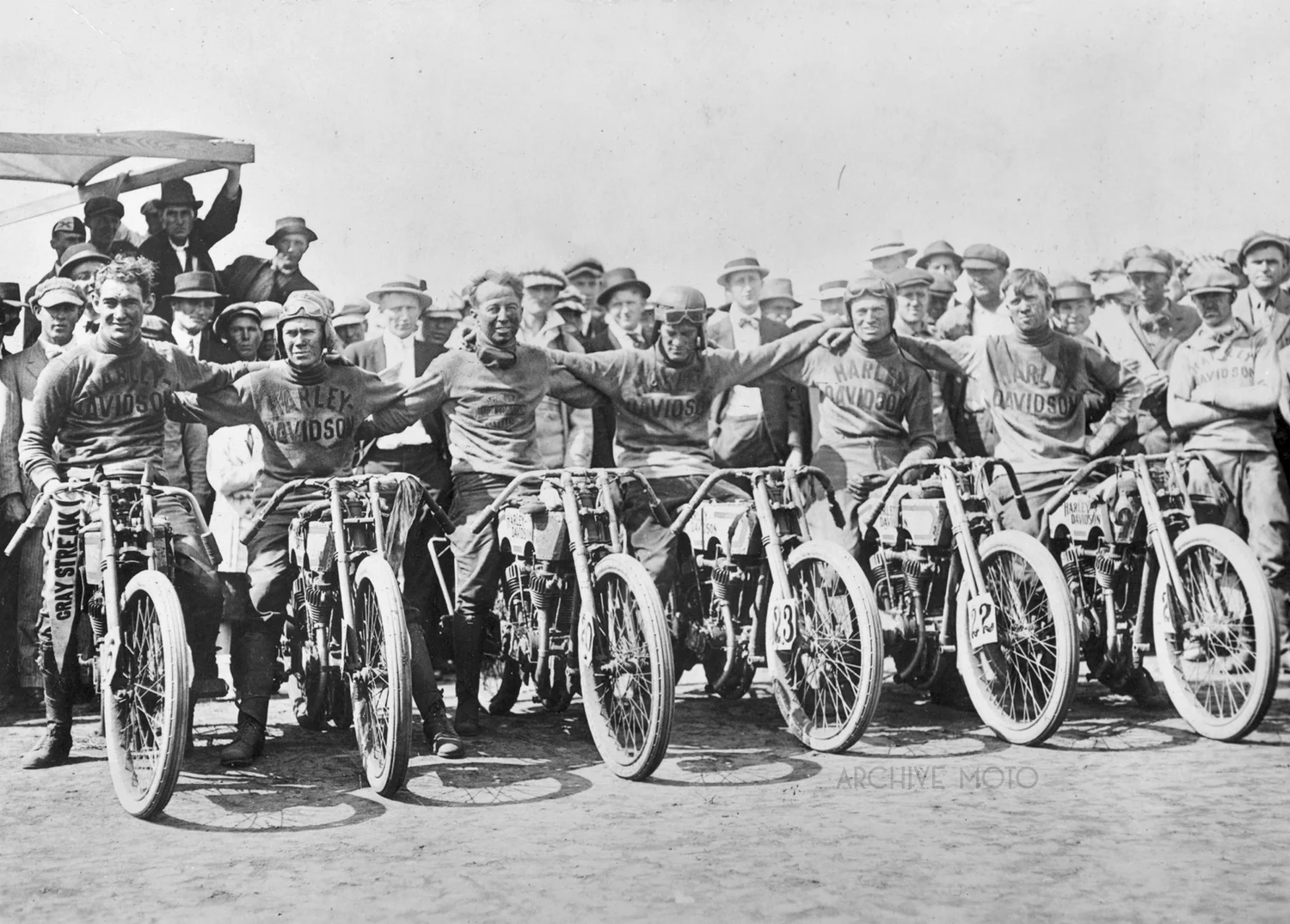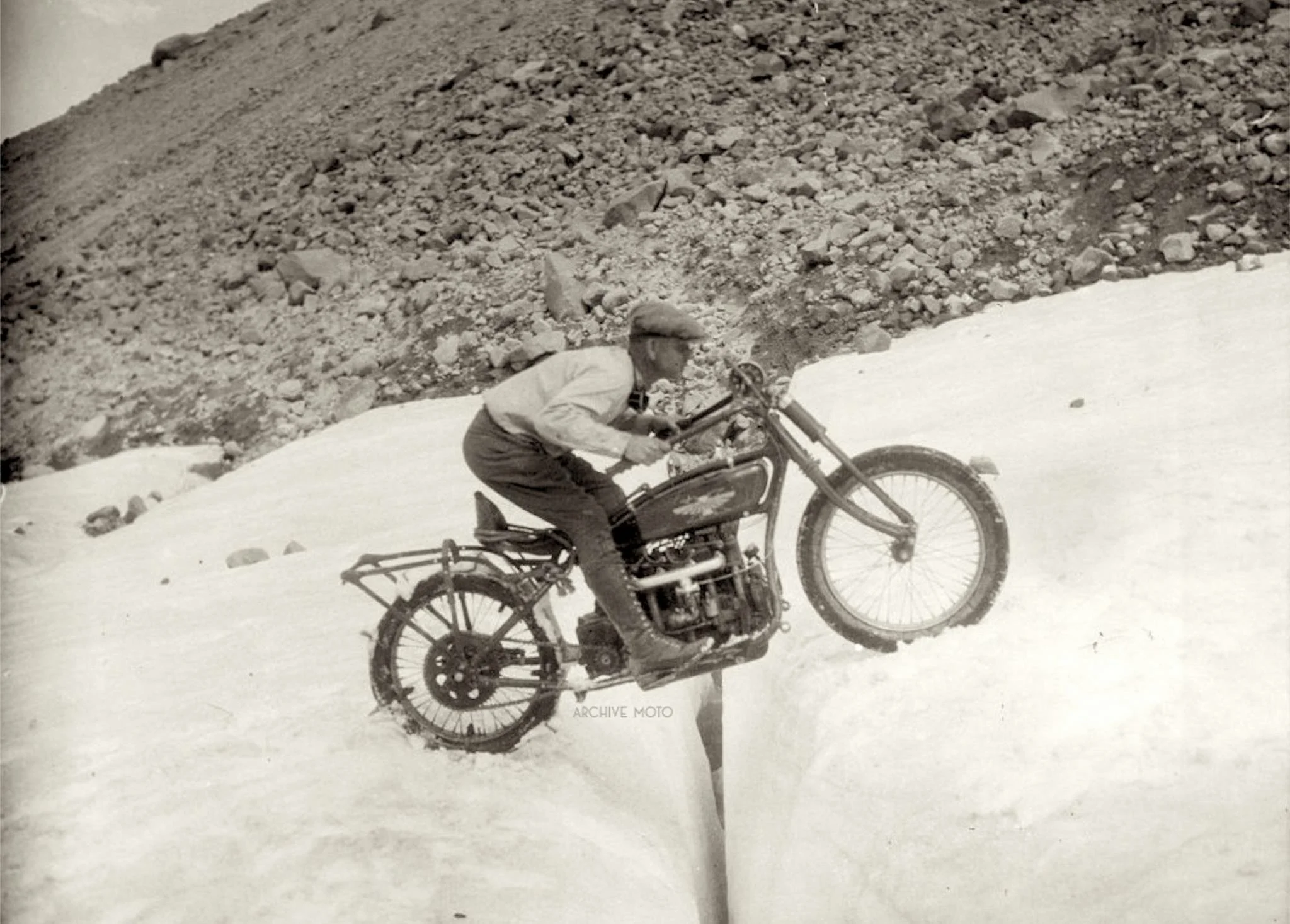This photo pops up from time to time but as happens too often the story behind it is missing. However, about a year ago there was a great conversation in the FB comments section that revealed a bit more detail, info that I stuffed away in the Archive Moto files. Since then, my buddy Dale, proprietor of the Shangri La that is the Wheels Through Time Museum in Maggie Valley, NC was asked if he knew any more about the photo. Dale in turn suggested to the curious gentleman, who happens to be the manager at the Harley-Davidson dealership in Utica, NY, that I may have come across some information to add. The fellowship of the ring not yet complete, the gentleman also reached out to the good folks at the Motor Co.’s archive department and together we were able to uncover a bit more of the story behind this wonderful photo. I would like to share what has been pieced together as the result of one man’s interest, and the efforts of half a dozen other enthusiasts in a collective effort of preservation.
This photo comes from the summer of 1915, the first year that the Harley-Davidson Motor Company officially threw its hat into the sport of professional motorcycle racing with a determined and tenacious factory program headed up by the masterful Bill Ottaway. The gentleman seen here is Mr. Charles F. Barrett, the son of Italian immigrants who worked at textile mills as a teenager in Utica, NY. A local enthusiast, Barrett stands confidently as he displays his trophy in front of the local Harley dealership after just having won the first annual Utica Auto Club Hill Climb on July 3rd, 1915. Barrett sits atop what is most likely an 11K4 track-configured single, one of the eight “specialty” racing models that Harley offered for the 1915 season, a machine which was no doubt acquired by Arthur F. Ferriss, Utica’s first Harley-Davidson dealer. Ferriss’ dealership, located on the block of Washington St. and Columbia St. proudly displays the victory advertisements of Harley’s breakout year across his storefront windows. To the left is the latest victory advertisement after the one two punch of Joe Wolters and Otto Walker at the La Grande 200 Mile Road Race in Oregon that June. It was this same weekend that Barrett made his triumphant ascent in New York that the factory team demolished the competition in Dodge City and forever making their mark on the culture. It is quite possible, if not most likely that Ferriss sponsored Barrett at the hill climb to keep in line with the Motor Co.’s newest marketing strategy, one which equated winning at the track with sales in the showroom. In the years follwing Barrett’s victory Ferriss ran a number of ads in the local paper touting the superiority of Harley-Davidson on the local hills.
Unlike the near vertical off-road hill climb competitions that were just beginning to take shape on the west coast, the inaugural Oriskany Hill Climb was more of European style event focusing on a timed sprint up an existing road, a popular event before WWI. The Oriskany competition was structured into 5 event classes and staged in a joint effort by the Utica Auto Club, the A.A.A., the New York State Motor Federation, and the local Firemen’s Convention Committee. The course selected was a 7/8 mile ascent up the College Street hill in nearby Oriskany Falls, NY, just south of Utica and featured, at its steepest a 15 percent grade. The 23 year old Barrett mounted his spry little Harley-Davidson track-configured single and shot up College Hill in a reported 48 1/2 seconds, nearly 65 mph, besting the fastest automobile to enter by 15 seconds. The time disparity between Barrett, his Harley, and the rest of the automobile entrants would result in the 1915 event being the first and last to allow motorcycles to participate. So far nothing more of Barrett’s racing career has turned up, though it is known that like so many of America’s professional and amateur motorcycle men Barrett went on to serve in Europe during WWI. Barrett enlisted summer after his big win in Oriskany Falls and was deployed in the early spring of 1918 as a Sergeant Major in the motor mechanics regiment of the National Guard and returned later that winter. A big thanks to everyone who helped reconnect the life behind this remarkable photograph.






